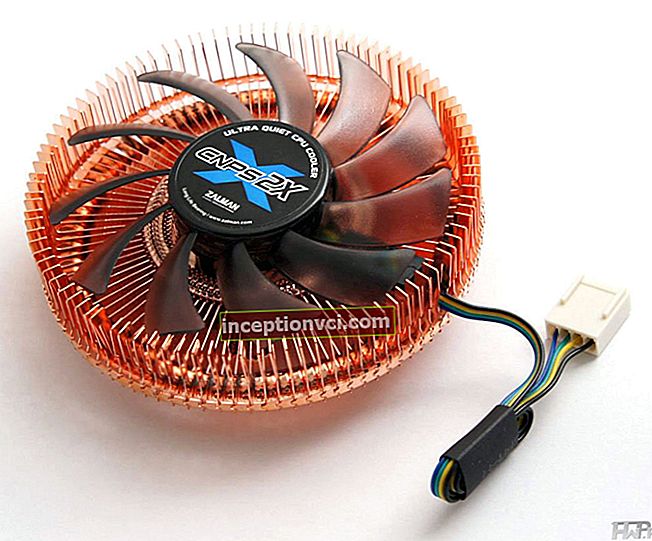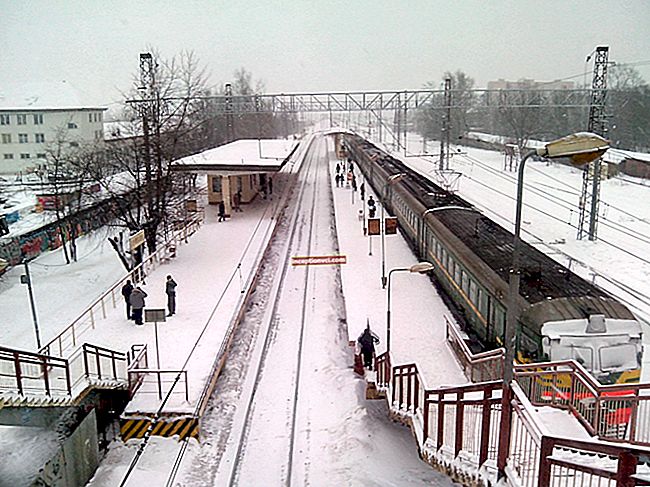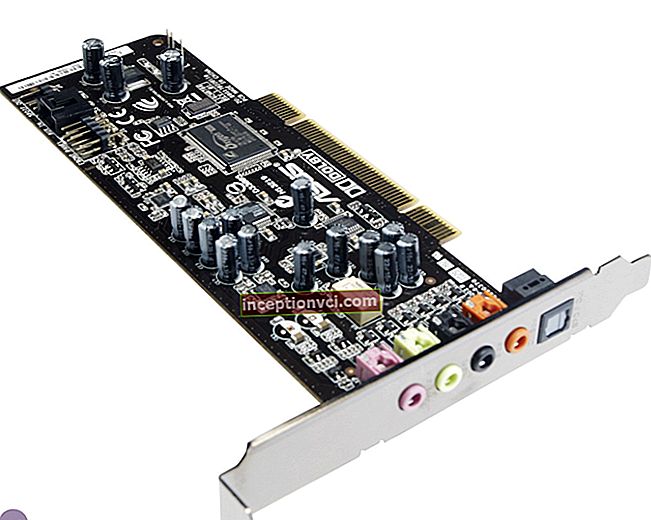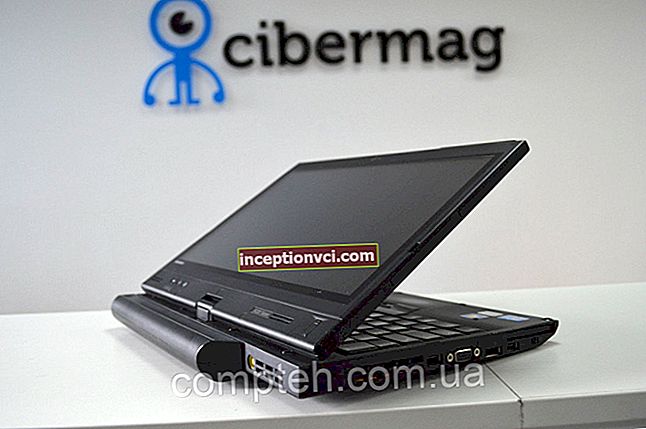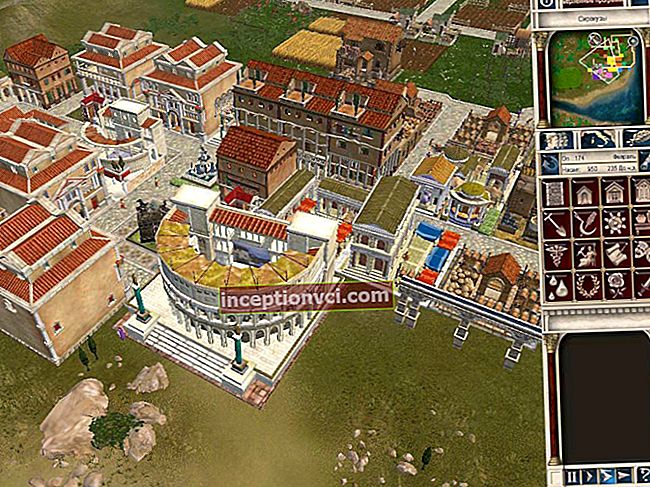The eternal dispute "Intel or AMD" threatens to turn into another heated discussion again. We have already been waiting for the new Bulldozer CPUs from the "red-blacks", and in the process of this long wait we brighten ourselves up with fun with new products that periodically appear on the market. Today, new central processors from AMD, whose codename the company's marketers have designated as Llano, deserve great attention. A completely new platform, the same new architecture - things are very interesting, so I would like to triple to see how AMD with the help of such innovations will be able to squeeze out the “expensive” Intel. Well, or again, after thinking, say that the empire of Gordon Moore is "ahead of everyone else on the planet," as has been said more than once.
AMD Llano A8-3800
It has long been believed that Intel takes the quantity and speed of emission to the shelves of its products, and AMD takes quality and the latest solutions. Today, nothing has changed: Intel has long integrated the CPU with the graphics core, while solving all the problems with desktop and mobile computers. AMD began to look in this direction quite recently, but the engineers went their own individual way, proposing a completely new approach to the integration of the graphics core. The result is a technology called Fusion.
The main principle of Fusion is “no downtime”. Integration of the video core into the processor in this case does not mean ordinary peaceful coexistence, but implies full interaction. All cores, in close cooperation with each other, give rise to a new engineering solution. The potential of such GPUs is huge, and using them only for processing and displaying images on a monitor is an irrational waste of available resources. Fusion makes it possible for the graphics core to process a large amount of information in parallel, which gives (in theory) a large increase in overall performance.
Llano platform: inner side
AMD began developing Vision chips (with integrated Fusion graphics) from the Brazos mobile platform, a solution for desktops and netbooks. Ontario and Zacate turned out to be ineffective, but quite convenient in the robot and inexpensive. Therefore, the company's engineers decided to give users two more platforms: Sabine and Lynx. These two products are already claiming a serious place in the market. They are based on the Husky core architecture, and the processors are designated as Llano. The world saw them under this name. It should be said right away that Llano is no longer a standard CPU, but a new APU - Accelerated Processing Unit. How much the technology corresponds to such a loud name, or is it just an invention of marketers - practical tests and, of course, time will show.
So let's take a look at the Llano chip with our picky eyes. The total number of processor cores is 2-4, depending on the model. The well-proven Stars processor architecture is used, and the cores are built using a 32-nm technological process. Computing cores can contain up to 400. As a result, such a solution will be able to compete with the budget video adapter Radeon HD added to the Phenom II processor.
The Llano APU crystal also has a GPU SIMD array (depending on the model), DP, DVI, HDMI digital interfaces, and a northbridge. There is a dual-channel memory controller DDR-3, UVD3, PCI-Express controller. The latter controller allows the use of 16 lines for the graphics subsystem, 4 lines for the UMI, 4 for other devices. There are not too many innovations in this regard: the latest generation of AMD Turbo CORE and 1 MB L2 cache for each core.
APU Llano architecture
The design also changed - socket AM3 died and FM1 was born. However, the death of AM3 had been predicted for a long time, besides, such a change came almost painlessly: at least, the cooling systems will not require replacement, because they are fully compatible with the new product.This is AMD's peculiarity - not to break, but to gradually replace, and it only brings joy. A number of changes have also taken place in the memory controller - now it has support for up to 64 GB.
APU Llano A8-3800
The TDP of APU Llano will not be large - this is natural for the class of desktop and mobile systems. The oldest models have 100 watts, while the younger ones only 65 watts. Such savings are achieved due to the reduced clock speed - the Llano is not endowed with huge performance, and why is it in regular desktops or entry-level laptops?
AMD APU Llano Graphics
The graphics system is the strength of the Llano family. As you know, Intel is betting on the performance of computing cores, pushing integrated graphics in this regard to the background. AMD has strengthened the graphics cores. APU Llano should compete with Core i3 Sandy Bridge, but the graphics "black and red" is endowed with a higher level. We can say about the correspondence of the integrated processor graphics to good budget discrete video cards of the HD 6500/6600 family. But those users who have little performance from integrated graphics will be pleased with the ability to create a CrossFire bridge with representatives of the already mentioned family, thereby significantly increasing the overall power of the video system. This is possible thanks to the Dual Graphics technology.
The Llano APU graphics are based on the Sumo core, which is almost identical to the Redwood architecture. The connection of the memory system has changed - now the north bridge is involved in the scheme. But, in general, we saw the same VLIW5, a very unfinished solution with a lot of shortcomings. The core is equipped with 5 SIMD units, 400 universal processors, 8 ROP units, 20 texture units. It has a frequency of 600 MHz - this is true for the A8 line. The younger A6 line behaves more modestly both in terms of frequency and in terms of the total number of processors.
Separately, mention should be made of the Dual Graphics technology. As already mentioned, it enables the integrated graphics core to work in tandem with a separate graphics card. However, we see clear inconveniences. Firstly, not every video adapter will go in harness, but only a compatible one (HD 6500/6600). Secondly, this technology works only with DirectX 10/11, and only the integrated core will have to work in DirectX9. However, the problem is not global: for old programs the maximum performance of this solution is quite enough, and those who need graphic power use more powerful video cards.
As for the purely technical side of the question posed, everything is done as conveniently as possible: Dual Graphics can be controlled from the BIOS of the motherboard. To activate the mode in the BIOS, the built-in kernel is initialized, and the monitor is connected to the video card. If only discrete video is used, then you need to switch the mode. The developers warn that Dual Graphics technology will not work with video adapters whose performance is half the maximum performance of the integrated graphics processor, but it will not work with more powerful symbiotic products either.
Testing AMD APU Llano A8-3800
And now you can go directly to the hero of this review - APU Llano A8-3800. A8 implies two models, which differ only in frequency and the amount of TDP. Our model got 2.4 GHz and 65 watts. Quite good for compact desktop systems. While sacrificing performance for power consumption, AMD engineers were not mistaken - in a small case, it is much more important to save on power than to chase maximum power. Again, such systems do not need great performance, and if some user wants to, then this can be safely considered a perversion.
The main competitors of the Llano A8-3800 will be, oddly enough, the younger Core i3 series. Although the developers have stated aloud about rivalry with Core i5 processors, these are just words: if mobile PCs still somehow allow such a comparison, then for ordinary computers the product from Intel is beyond competition - clock speeds are much higher.Therefore, exclusively dual-core Core i3s will participate in today's test, especially since the price for them and the Llano A8-3800 is similar.
To get a whole picture of the performance, on the test bench today we will make comparisons with the Core i3-2100. Naturally, it has a higher frequency than our hero, but this particular processor will provide an opportunity to get the most objective picture of the current study. We chose the slowest competition - for the purity of the experiment.
We decided to divide all studies into two groups: in a system with HD 6970 and without it. The first option involves disabling the built-in GPU. Let's see how the Llano A8-3800 with a physical video adapter will show itself in this case.
SYSmark 2012
The controversial SYSmark 2012 utility is of great interest this time. Despite all AMD's claims to this software and its authors, it is she who meets every requirement of the benchmark and performance measurements. The test uses a bunch of applications, and the results provide a comprehensive assessment of the maximum performance of the CPU. AMD accuses the authors of discriminating against their own products, because the set of utilities does not include those with whose help you can speed up the resources of the APU Llano. To be fair, it should be noted that there are very few such applications, so the objectivity of the test is not discussed.
SYSMark 2012 Performance
The final results for the hero of our review are very disappointing: a serious lag immediately catches the eye and completely disappoints, especially if you think about more cores in AMD. However, it should be noted that the processor from Intel supports Hyper-Threading technology and is endowed with higher clock speeds.
SYSmark 2012 works in several scenarios. Office work is performed by Office Productivity, 3D images are modeled by 3D Modeling, Media Creation uses video codecs. The results showed us a noticeable lag behind AMD Llano A8-3800. And only in three-dimensional modeling, the graphics core manifests itself in all its glory. In other respects, more cores were not given any advantages.
SYSMark 2012 Performance
Energy consumption
The power consumption of the APU Llano A8-3800 is the highlight of the novelty. First of all, 65 watts, as stated by the manufacturer, is already good. Second, disconnecting the power from the CPU units saves energy.
Power consumption APU Llano A8-3800
In simple, assembled system with Llano consumes less power of the competitor, as expected in advance. The situation changes slightly under load, but the indicators show that the new processor is not demanding.
Apple iTunes
Encoding / decoding audio files is another test performed with Apple iTunes. As you can see, Llano lost significantly to the opponent, even considering that four cores were working, not two.
Performance when encoding audio files
X264 HD video file encoding
The x264 HD test, which determines the video encoding speed, showed good potential of the Llano A8-3800. In part, this directly depends on the x264 codec, which works well with AMD processors and uses all the cores to work.
Video encoding performance
Determining the behavior of the CPU in games is a priority. It's no secret that overall gaming performance does not depend on the CPU, but on the graphics power. Therefore, the tests imply the dependence of the processor and medium settings in order to use the video adapter to a minimum: it is not he who is tested. According to the final results, we again saw the lag behind the APU Llano A8-3800, although not so significant. Considering the clock speeds, this is a good progress provided by the L2 cache.
Dirt 3
Dirt 3 performance
Starcraft 2
Performance in Star Craft 2
It's time to look at the results of the second part of our testing - with the processor GPU enabled. Actually, without it, the APU Llano A8-3800 is not only uninteresting, but even useless.
3DMark Vantage
3DMark Vantage has clearly demonstrated to us the capabilities of the new processor, which should captivate users.A significant lead in the tests, even despite the lower clock speeds - excellent results. Integrated solutions from Intel lost in all respects - that's why Llano was created.
3DMark Vantage performance
Dirt 3
In gaming tests, our hero continued to hold the bar high, leaving behind his eminent competitor. Even in Dirt 3, which extorts DirectX11 (Core i3 runs on DX9), the advantage is more than obvious. Actually, this is, of course, to be expected: with each new leap from AMD, Intel fades sharply and noticeably.
Dirt 3 performance
Tom Clancy H.A.W.X. 2
Ton Clancy H.A.W.X 2 performance
As for the power consumption when the graphics core is turned on, the situation here is ambiguous. In idle time, we saw the advantages of the Llano A8-3800 APU, under the maximum load on the graphics core - Intel's obvious leadership. However, the graphic power of the novelty allows you to put up with this, and the power consumption did not go beyond the limits, remaining moderate all the time.
Energy consumption
Power consumption APU Llano A8-3800
conclusions
Thus, as a result of our study of APU Llano A8-3800, we will highlight:
- a very productive graphics core;
- low level of energy consumption;
- new processor socket;
- good implementation of the joint work of graphics and computational cores.
As a kind of opposite to the listed advantages, we note low performance.
This is theory, but in practice, without its graphics core, APU Llano A8-3800 is an average product that cannot compete with Intel solutions. Therefore, those users who plan to use a discrete video adapter in their system should not pay attention to the new product from AMD. If we talk about cost-effective mobile systems, then the hero of today's review fully meets all the requirements: integrated graphics can replace entry-level video adapters, provides greater performance and allows the central processor to process data packets faster. In this case, low clock frequencies do not play a huge role - mobile systems do not demand high performance, and indeed they cannot: heat dissipation and energy consumption in miniature cases still play an important role.
